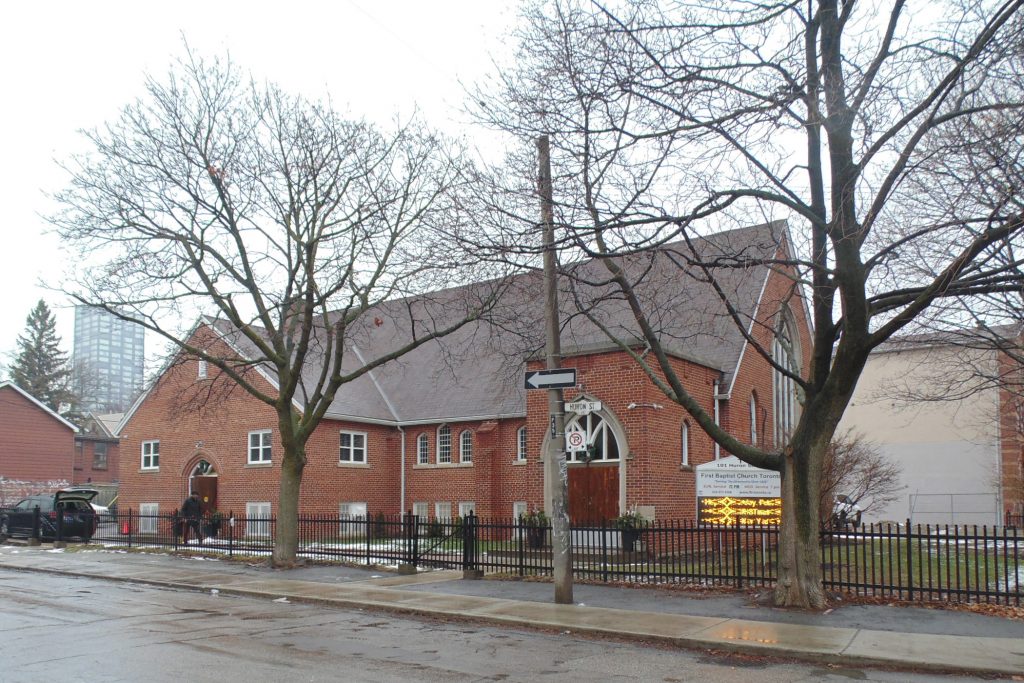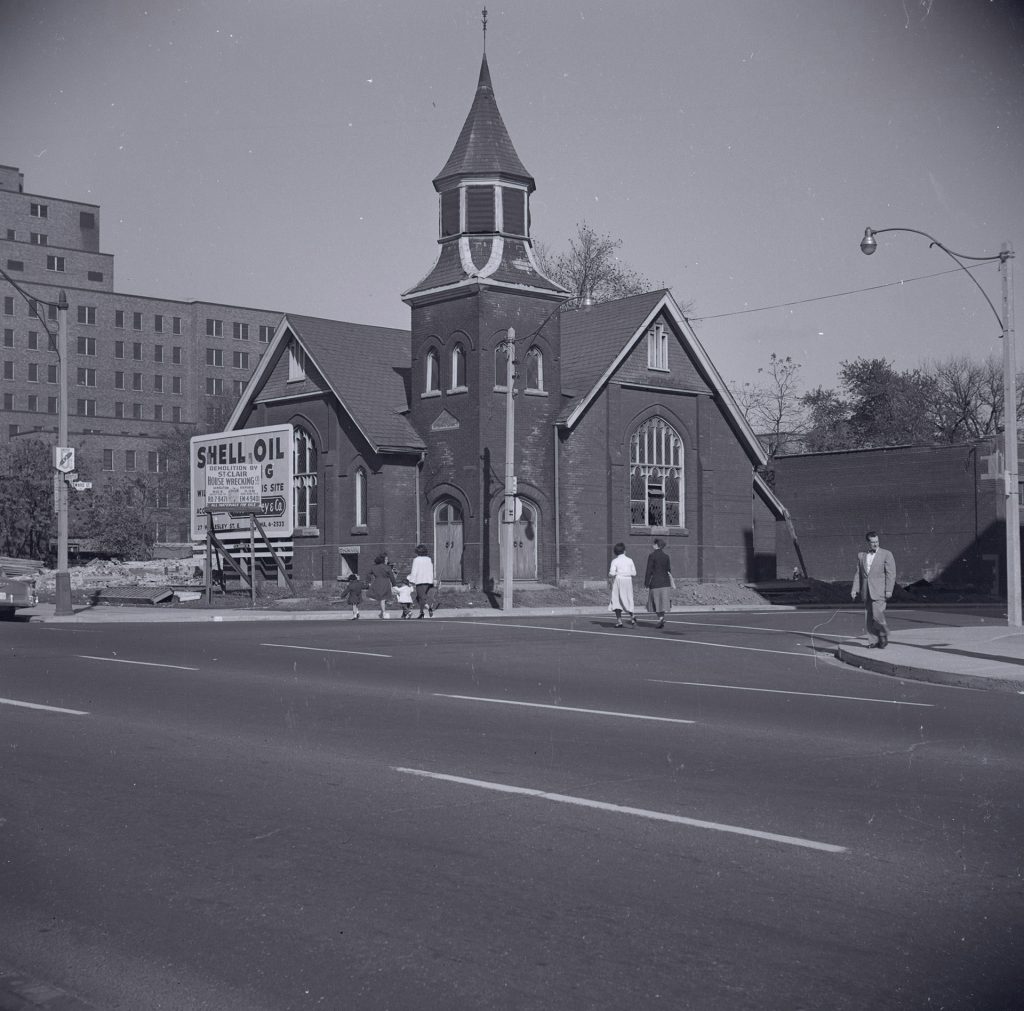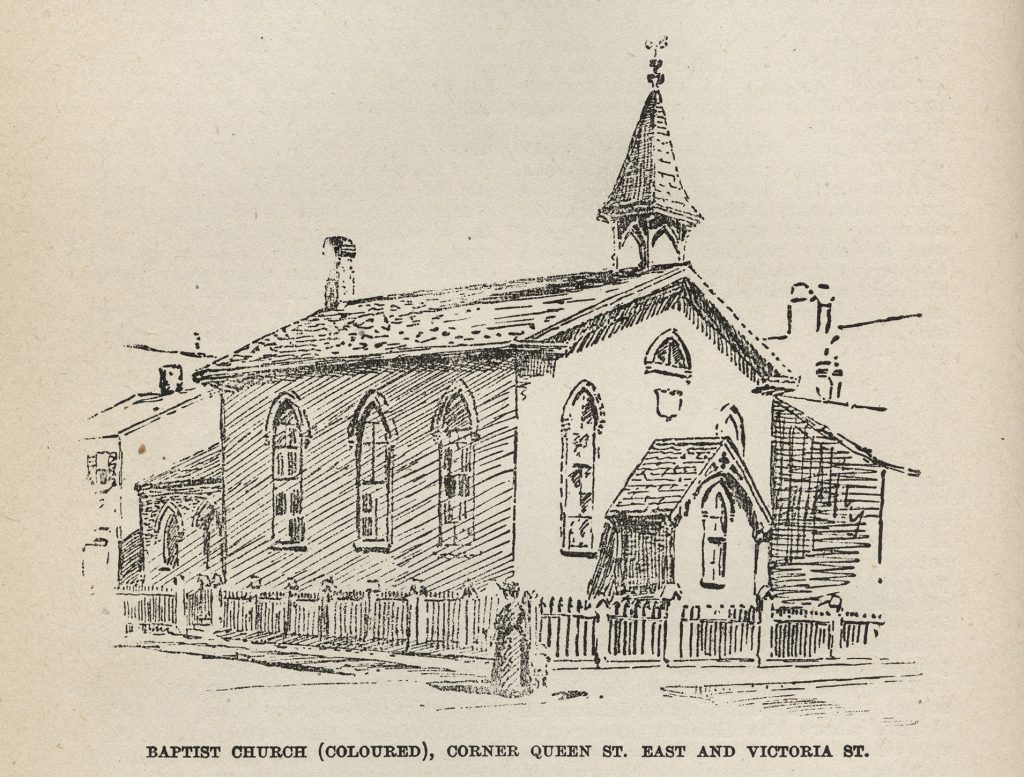A church founded by former slaves who were rejected by “white” churches
By Hailey Alexander

First Baptist Church at 101 Huron St. was founded in 1826 by Elder Washington Christian and 12 other formerly enslaved people who escaped to Canada by way of the Underground Railroad. First Baptist Church is the oldest Black institution in Toronto.
First Baptist Church has experienced many challenges. Penelope Hodge, church historian, stated that Upper Canada passed an act in 1793 to prevent the “further introduction” of enslaved people and limit the term of “forced servitude” in the province.
This statute provided children born to enslaved parents automatic freedom upon reaching the age of 25.

COURTESY TED CHIRNSIDE/www.torontopubliclibrary.ca
Natasha Henry, historian and president of the Ontario Black History Society, elaborates further in the Canadian Encyclopedia on this matter stating that one of the last recorded sales of a person in Upper Canada was in March of 1824.
By then, black children were legally born free and former enslavers were “required to provide security” for those whom they freed.
First Baptist Church says in their historical statement that existing “white” churches met the original group of 12 fugitives with the conditions that they needed to produce “letters of dismissal” from their old churches in America and repay their former enslavers the “loss of money sustained by their escape from slavery.” Aware of these impossible conditions, the group organized a small Baptist congregation under the pastoral leadership of Elder Washington Christian in 1826. During this time, fugitives commonly formed communities within the context of religious faith and the belief of a Promised Land that would grant them physical freedom.
First Baptist Church’s services first took place in members’ homes and outdoors until the group leased St. George’s Masonic Lodge for weekly services in 1827. In August of 1834, Britain’s Emancipation Act came into effect in the British Empire and about 800,000 enslaved Africans around the world were legally free.

UNKNOWN – “Toronto’s First Baptist Church,” TPL Virtual Exhibits
The church moved that same year and held services in a schoolhouse on Richmond Street. It would move several times before settling into its current home at the intersection of D’Arcy and Huron streets in 1955.
It is unclear how people discovered First Baptist Church throughout its history, but the church now stands tall with a diverse group of members under the leadership of Rev. Wendell Gibbs, Toronto Police Chaplain and community advocate. Church services and other amenities are now accessible in-person and online. First Baptist Church invites “all races and nationalities to worship,” further stating that they do not want to repeat the behaviour that once forced their founding members to seek a separate religious institution.
In light of their history, First Baptist Church acknowledges February as Black History Month with special activities, displays, guest speakers, and youth performances.
The church also has a heritage room open to visitors that holds historical accounts, photos, and artifacts. In response to the community’s growing interest in the history of the church, the church plans to release a film about its remarkable progress through “racial tension,” as Gibbs mentions in the trailer. An additional multimedia project titled Lights, Camera, Action: Bringing Black History to Life is underway with the goal of inspiring and informing the community.
